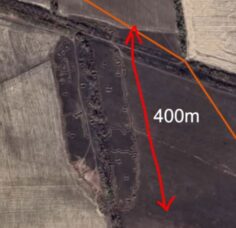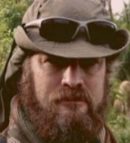 ATTACK OVER OPEN TERRAIN. Here we see Ukrainian soldiers during Kiev's first real major offensive, which began on August 29 on the southern front in Kherson Oblast. Now the roles were reversed, but since the Russians do not have extensive fortifications, they conducted a tactical retreat and let the artillery do the work. The offensive failed despite the massing of well-trained mechanized units – trained in Britain and with newly supplied armor – from across the southern front including Odessa and also western Ukraine, at least five directions of attack and three waves (at our going to press) in which mobile reserve appears to have been deployed where initial successes were recorded (as it should be done). The Ukrainian losses are said to be catastrophic and show how difficult it is to advance with armor on the modern battlefield, as well as that the artillery is once again the "God of War". Still image: Twitter
ATTACK OVER OPEN TERRAIN. Here we see Ukrainian soldiers during Kiev's first real major offensive, which began on August 29 on the southern front in Kherson Oblast. Now the roles were reversed, but since the Russians do not have extensive fortifications, they conducted a tactical retreat and let the artillery do the work. The offensive failed despite the massing of well-trained mechanized units – trained in Britain and with newly supplied armor – from across the southern front including Odessa and also western Ukraine, at least five directions of attack and three waves (at our going to press) in which mobile reserve appears to have been deployed where initial successes were recorded (as it should be done). The Ukrainian losses are said to be catastrophic and show how difficult it is to advance with armor on the modern battlefield, as well as that the artillery is once again the "God of War". Still image: Twitter
God of War: Artillery once again rules the battlefield
The war in Ukraine has now been going on for over six months with widespread destruction and death. It has not developed as either side believed or hoped for and has offered even military experts many surprises. Artillery—not air combat—rules the battlefield, countered primarily by spades and pickaxes. The Napoleonic Wars as well as the First World War come to mind. We demonstrate unknown power ratios and indicate four weapon types that more or less go to the grave with this conflict. We also predict what it will take to dethrone the "God of War", artillery.
Published: September 12, 2022, 8:08 am
Much has been said and written about the war in Ukraine since Russia’s “Special Military Operation,” as Moscow calls it, began on February 24. However, the facts are drowned in the media’s propaganda, lack of knowledge and not infrequently wishful thinking.
The dynamics on the battlefield in Europe’s last major war also look completely different to the last known conflicts and what many had expected. We see, for example, the main assault weapon of the Second World War, the tank – which was absolutely crucial to the successful blitzkrieg of the Germans over part of the same Ukrainian steppes – reduced to a role equivalent to the infantry gun carriage. The tank also ruled on land during other modern wars, such as the Arab-Israeli war in 1973 or NATO’s invasion of Iraq in 2003, but today it is quickly rendered harmless.
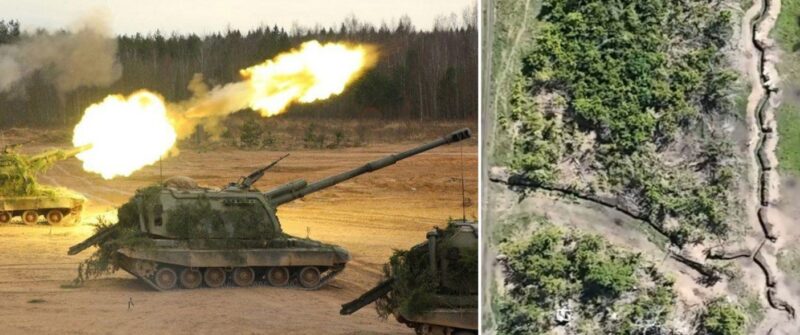
RUSSIAN ARTILLERY WINS THE WAR. The self-propelled howitzer 2S19 MSTA-S (tv) has a caliber of 152 mm and weighs 42 tons. It originated in the final stages of the Soviet Union and entered service in 1989. At the outbreak of war on February 24, Ukraine had around 400 and Russia well over 1000, of which 270 were in storage. The 2S19 forms the “backbone of the Russian artillery forces” and is “a nightmare for the Ukrainian army” according to Western military analysts (Army Recognition Group). It can fire the dreaded 2K25 Krasnopol, a laser and GPS/GLASSNOS guided wing stabilized precision grenade. However, there are considerable problems with the buried Ukrainian defenders. A regular Ukrainian rifle platoon digs in kilometers of defenses and prepares countless firing positions in different directions and alternating firing positions to move between to avoid combat. Thanks to modern weapons, the scattered units are still enough to make an advance costly for the enemy. Photo: Russian defense ministry, Still image: Telegram @voenacher
Artillery conquers and infantry occupies, as JFC Fuller (1878-1966), British Major General known for Nine Principles of War, which formed the basis of much modern military theory since the 1930s, stated.
The changed dynamic is due to a number of factors, but two stand out in the war in Ukraine. We will therefore in this analysis take a closer look at the war’s most important weapons and the most decisive defense technology, where one is often underestimated and the other is associated with another war in Europe. It is not about drones or advanced anti-tank robots, as many might think, but about artillery and trenches. Both can be said to be making a big comeback, to the surprise of many, on the modern battlefield of Europe in 2022 – over a hundred years after the trench warfare of the First World War (1914-1918).
Trenches crucial
Ukraine has been preparing for war ever since the Western-instigated coup in 2014 and the subsequent separatist backlash in the eastern and southern parts of the country. Today there is an extremely extensive network of fortifications and trenches mainly in the Donbass region in the east, where both sides invested the most resources.
Not only is it, according to some analysts, the largest defense agency in the entire world today, but there is also an unusually large amount of digging if we count per soldier. A platoon of around 40 men often has trenches in all directions with a perimeter of around one kilometre, which is, for example, 400 meters long and 100 meters wide with not infrequently a tree line or forest section in the middle. They thus have visibility in all directions at the same time that their trenches (the ones between the trenches that run within the defense agency) partly go through camouflage vegetation. It is about many “big islands” of trenches and fortifications unlike the First World War, where it was more about a single long line although there could be defenses in depth. At the beginning of the First World War, they often had both a second communication ditch and a third reserve ditch, but they were abandoned as artillery became more effective because it became too dangerous to move between them. Instead, dividing the trenches into “islands” with built-in depth defense is possible today thanks to more advanced weapons and, not least, better communication. It is also a necessity, as the rain of shells from the Russian artillery has proved devastating.
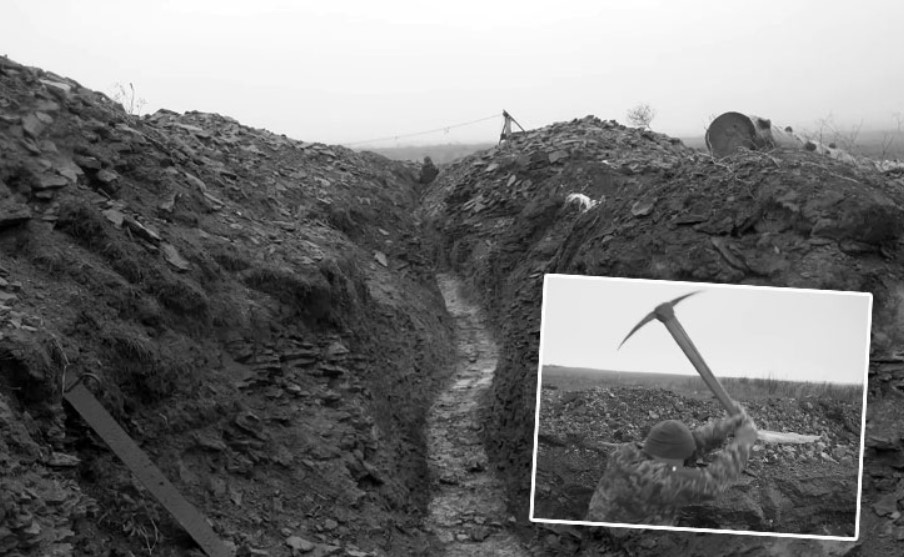
“IF YOU WANT TO LIVE, DIG!”, says an experienced Ukrainian fortification soldier in the French documentary “Tranchées”, which tells about them and their work in building defense works in Donbass. The soldiers, who in many cases have specialized in digging trenches for several years, say that they see the spade and – even more so – the pickaxe as more important than weapons. Without these simple tools, they and their colleagues would not have a chance to survive. War is anything but what is shown in feature films. It is long preparation, eternal waiting, paralyzing fear, and for many suffering and death. Trench warfare is probably the worst form, as it includes more misery and powerlessness. Many Ukrainian soldiers who are killed in the rain of shells have not fired a single shot at or even seen the enemy, only seeking cover day and night until their luck runs out. Still images: Trenchées
This type of cluster-like fortifications, although only simple and cheap of mostly earth and wood in the form of dug trenches and shelters, make it very difficult for an attacker to capture these defense systems, as they are often placed with open terrain around them. Bypassing them is also not possible, as it only means that the attacker will be fired upon from more such defenses from several directions.
In order to capture such an extensive defensive structure, which each defending platoon has at its disposal, the attacker is forced to use large quantities of shells or engage in costly close combat. The Russian military almost always chooses the first option, sending in the infantry only when they believe the defenders are eliminated or so weakened that they cannot offer much resistance. With Ukraine’s extensive fortifications per soldier/capita, however, the attacker often gets unpleasant surprises in the form of surviving defenders who can be found behind every corner or underground entrance.
To this must be added anti-personnel mines that a defending platoon can use precisely because they can choose to retreat within their own large defensive structure, which not infrequently corresponds to the area of roughly a football field per group/around ten men.
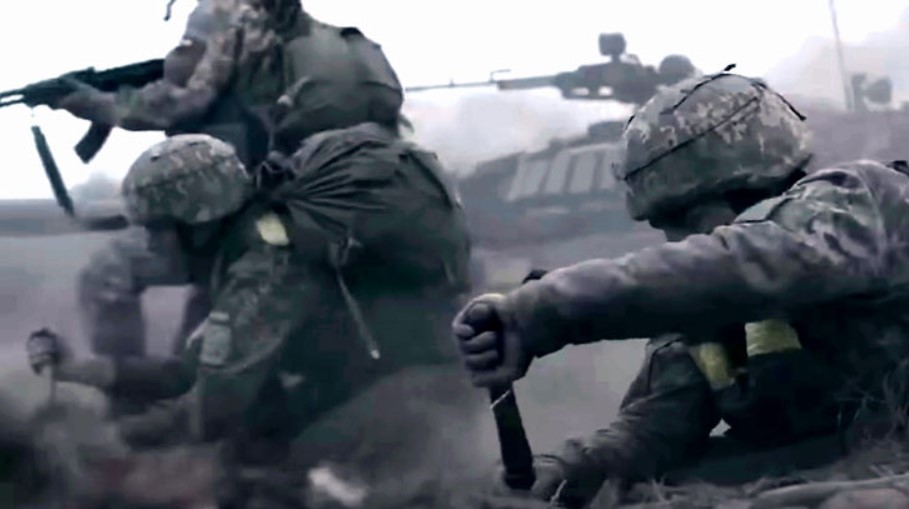
“WE DIG INTO THE GROUND, DEEPER, and then we connect our trench with our comrades on the left. In just a few hours, all the trenches are connected,” says the announcer’s voice in the Ukrainian recruitment video. It tells how they “in a short time create protection against bullets” at the same time as you see soldiers advancing with the support of armor while a large percentage of them frantically dig defenses. The video is unique and remarkable, as it presents the digging of gun emplacements as central to a recruitment film and also during an offensive operation. If it is representative of the training Ukrainian soldiers receive, then it may be a partial explanation for the fact that Ukraine today has the world’s most extensive network of trenches, which make contemporaries on the Korean peninsula and even some known historical ones pale in comparison. Still image: Ballad of the Infantry, Ukrainian recruitment film
These trenches are then interconnected with tunnels and emplacement shelters for covert movement and rest underground. A platoon alone cannot man such an “island” effectively in all directions, they are too big for that, but it is almost never needed. The advantage – or rather the necessity when the enemy has strong artillery – is that they can spread out and – just as importantly – constantly change position. That makes fighting them very time consuming even for the Russian military who have very large quantities of artillery. This is because they cannot know for sure in which part of the fire defense – unless they have live drones – underground tunnels or shelters the defenders are in, or if they are still in the fire position or observation post that was previously reported. Without drones, which cannot be everywhere, “the harder the fighting and the longer the war, the more the infantry, and indeed all arms, rely on the artillerymen,” noted Bernard Montgomery (1887-1976), iconic British field marshal during World War II.
Ironically, frequent entrenchment was a tactic used by Soviet soldiers during World War II against the motorized and mechanized Germans, who also remarked that the Russians were “good with their spades.” Trenches benefit a defender who lacks sufficient mobility and mostly consists of poorly trained recruits – like the Soviet Union then and Ukraine now, half a year into the war.
The First World War is remembered
The use of artillery and trenches, as in the First World War, also provides a landscape reminiscent of it. Many experts have also pointed this out. One of these is Nicolas Beaupre, who is a board member at the French Association for Research on the Conflict 1914-18. He pointed out that what is visible in Donbass is a “war landscape comparable to those visible during the First World War, with destroyed villages along the front line”. Ukrainian military and hospital sources, including in Kramatorsk, state that 80 percent of the Ukrainian soldiers being treated in hospitals there have shrapnel injuries. That can be compared to 60 percent during the First World War, which says a lot about the importance of artillery in 2022.
“If you don’t have enough artillery, stop,” according to Richard E. Cavazos (1929-2017), well-decorated (including DSM and SSM) American general in the Korean War (1950-1953) and the Vietnam War (1955-1975).
The conflict in Ukraine can be described as an artillery war, partly due to the fact that Russian combat aircraft are used very sparingly. Russia has artillery supremacy instead of air supremacy, as the US and NATO usually have. There are on some satellite photos hundreds if not thousands of craters over not very large areas. It goes without saying that the Russian artillery is anything but frugal with its shells and rockets, which goes completely against the repeated claims of the Western media and their “experts” that Russia is suffering from a shortage of ammunition.
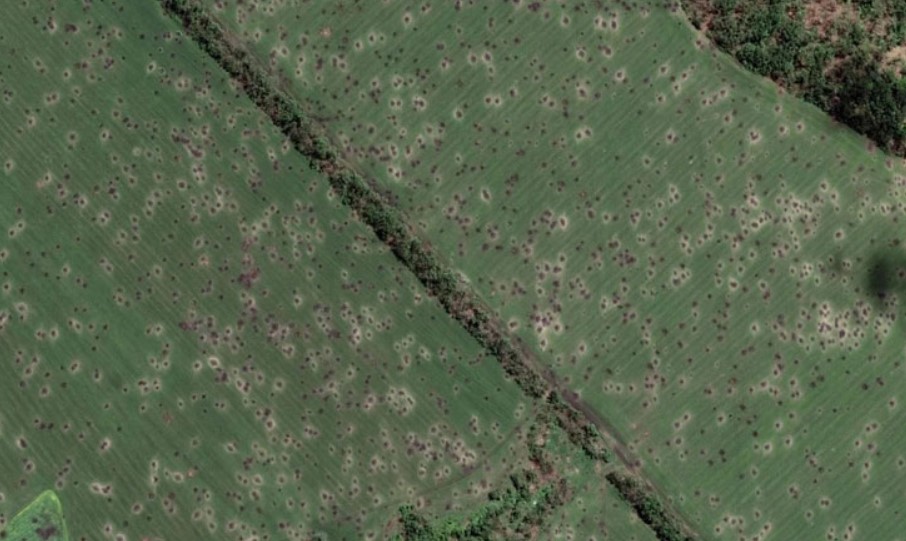
HUNDREDS OF CRATERS from Russian artillery and grenade launchers are seen here in the Donbass, outside the city of Slovjansk held by Kiev forces. The similarities to the First World War crater landscape are striking. Remarkably, no Ukrainian trenches are visible, as these are hidden by vegetation among the trees. It is common for there to also be guards and fire stands a bit in front of and behind the tree lines, but not here. Despite that, we can state that the Russian army chooses not to prioritize accuracy and uses grenades and rockets in abundance. Photo: Maxar Technologies via SCMP
“Artillery is the god of war,” noted Joseph Stalin (1878-1953), leader of the Soviet Union (1922-1953) on the artillery which was also given a key role in Soviet military doctrine
It also shows that the precision is not the best. There could be several explanations for that. One of Russia’s weaknesses is the availability of drones, which are needed today to effectively direct the artillery and have control over the front line. There are also no civilians to consider in undeveloped open landscapes and round-the-clock shelling for several days or weeks has value in itself, as it is both mentally and after a while physically draining for the defenders. These hear the incoming shells and are forced under stress to seek shelter – again and again – which hinders both operations and recovery. Death can come at any time, which combined with idle waiting creates a demoralizing sense of powerlessness.
A defender who gets used to seeking shelter in underground passages and emplacements does not see the attacker coming, the day the enemy infantry storms. Normally, a defender is warned before an attack precisely because artillery is then used, but if it goes on frequently day and night, that advantage disappears and the defenders are also blunted. Then one morning the attack comes during a customary short break and the defenders are wiped out.
Ukraine – big underdog
The war in Ukraine is not only the bloodiest in Europe since World War II, but the first in modern times where both warring parties have large and technologically advanced military forces. Ukraine’s army is also the second largest in Europe, after Russia. Moscow, however, only uses about 200 000 men, roughly half of its professional soldiers, in Ukraine. Russia’s active military is around 900 000 men. Ukraine’s military is significantly larger than many people know. Before the war, it had 1,2 million men, 200 000 of whom were active and 900,000 reservists, a large part of whom had been called up since the outbreak of war. According to Kyiv, their active military strength was over 700 000 in July. Russia’s force in Ukraine is thus around three times less in number of men, but with significantly more artillery – something that has proved decisive.

ATTACK OVER OPEN TERRAIN. Here we see Ukrainian soldiers during Kiev’s first real major offensive, which began on August 29 on the southern front in Kherson Oblast. Now the roles were reversed, but since the Russians do not have extensive fortifications, they conducted a tactical retreat and let the artillery do the work. The offensive failed despite the massing of well-trained mechanized units – trained in Britain and with newly supplied armor – from across the southern front including Odessa and also western Ukraine, at least five directions of attack and three waves (at our going to press) in which mobile reserve appears to have been deployed where initial successes was harvested (as it should be done). The Ukrainian losses are said to be catastrophic and show how difficult it is to advance with armor on the modern battlefield, as well as that the artillery is once again the “God of War”. Still image: Twitter
If we look at Ukraine’s total number of 1,2 million men (source: International Institute for Strategic Studies), it is more soldiers than France, Great Britain, Germany, Finland, Denmark, Norway and Sweden combined. The number is similar with a lot of heavy equipment. Before the war, Ukraine was thought to have just over 1 000 self-propelled artillery pieces, which is almost 100 more than France, Great Britain, Germany, Finland, Denmark, Norway and Sweden combined. Nevertheless, many countries in Europe send a significant proportion of their relatively small artillery to Ukraine.
Napoleon Bonaparte (1769-1821), Emperor of France (1804-1814) and one of the foremost commanders in all of military history, remarked on the absolutely decisive role of artillery on the battlefield: “God is on the side with the best artillery.”
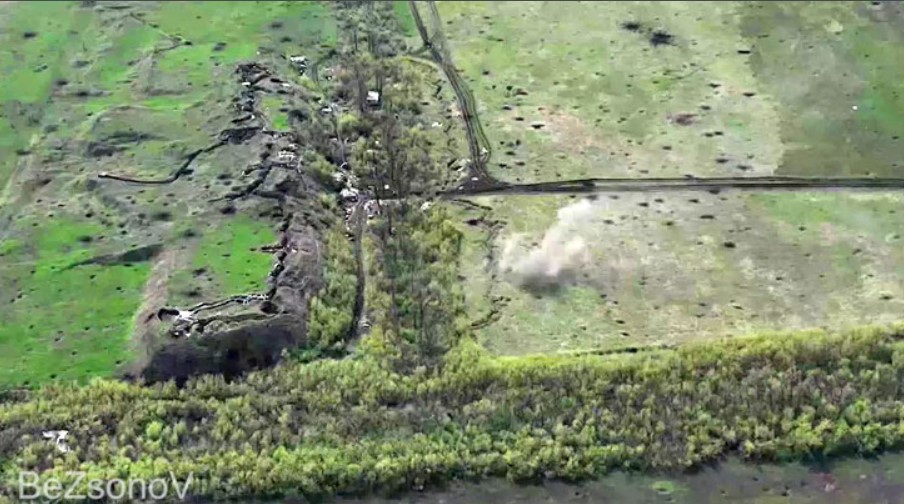
Ukrainian fortification, trenches in front and behind tree line. Here is one part on a hill, which makes it a formidable fortress. Not only does it give almost 360 degrees observation and line of fire above the treeline, but it also provides even better protection against all infantry and armoured attacks. The bigger round fire positions can be used for mortar- or AT-crews.
We chose to look at self-propelled artillery, as non-self-propelled artillery proved to be obsolete in the Ukraine war. This is because artillery location radars, such as Swedish Ericsson’s Arthur, can detect in a few seconds where the enemy’s artillery fire is coming from and thus deploy counterfire very quickly. Self-propelled artillery, such as the Swedish Bofors artillery system Archer, can fire and immediately move afterwards. But towed pieces cannot do that, as they take time to set up and then prepare for transport from the launch site. Therefore, it is noteworthy that the Western media claim that the British M777 howitzer, donated to Ukraine by several Western countries, “will make a decisive difference in Ukraine’s war with Russia” (New York Times, May 23).
Ukraine may be the underdog in the conflict, but it is a very big one.
Obsolete weapons
The tank has also proven itself obsolete on the modern battlefield, at least in its intended role. It cannot act as a spearhead as in the glory days of yesteryear, because armed drones are taking on an ever-increasing role at the same time that every other soldier today has access to anti-tank weapons. These are not as “fantastic” as the Western media would like to claim, but Ukraine has been flooded with them. And as Stalin allegedly said “quantity is also a quality”. Russian tanks have therefore started to be used today in Ukraine more as infantry gun carriages, which support the infantry from an appropriate distance – thus a role similar to the artillery’s direct fire.
As George S. Patton (1885-1945), American tank general and commander of the Western Allies during World War II, noted: “I don’t need to tell you who won the war. You know, the artillery did it.”
Combat aircraft in general and low-flying attack aircraft in particular are also having a hard time due to increasingly advanced radar and air defense systems as well as portable anti-aircraft devices, so-called MANPADS, which Ukraine also received in thousands from the West. Despite the fact that almost all of Ukraine’s advanced air defense systems have been knocked out, Russian fighter aircraft continue to maintain an appropriate distance. Very few of the several hundred warplanes stationed at bases around Ukraine are used in the conflict. We do not see the total air supremacy that the US and NATO have shown in a number of countries in recent decades here.
Paradoxically, even the trench can be said to be outdated as Ukraine’s extensive fortifications in the east have been absolutely decisive to make the Russian advance there very slow and at times almost at a standstill, but it has been done at a terribly high cost in loss of life.
We do not know how many Ukrainian soldiers have been killed or injured, but it is likely that the number when it becomes known in the future, will shock both the Ukrainians and the outside world. Again, it is drones, observational or armed, and artillery with precision grenades and advanced release devices that turn an open trench into a death trap. The trench will therefore move underground in future conflicts, something we saw during the Vietnam War (1955-1975) and most recently in the Syrian War (2011-).
All rights reserved. You have permission to quote freely from the articles provided that the source (www.freewestmedia.com) is given. Photos may not be used without our consent.
Consider donating to support our work
Help us to produce more articles like this. FreeWestMedia is depending on donations from our readers to keep going. With your help, we expose the mainstream fake news agenda.
Keep your language polite. Readers from many different countries visit and contribute to Free West Media and we must therefore obey the rules in, for example, Germany. Illegal content will be deleted.
If you have been approved to post comments without preview from FWM, you are responsible for violations of any law. This means that FWM may be forced to cooperate with authorities in a possible crime investigation.
If your comments are subject to preview by FWM, please be patient. We continually review comments but depending on the time of day it can take up to several hours before your comment is reviewed.
We reserve the right to delete comments that are offensive, contain slander or foul language, or are irrelevant to the discussion.
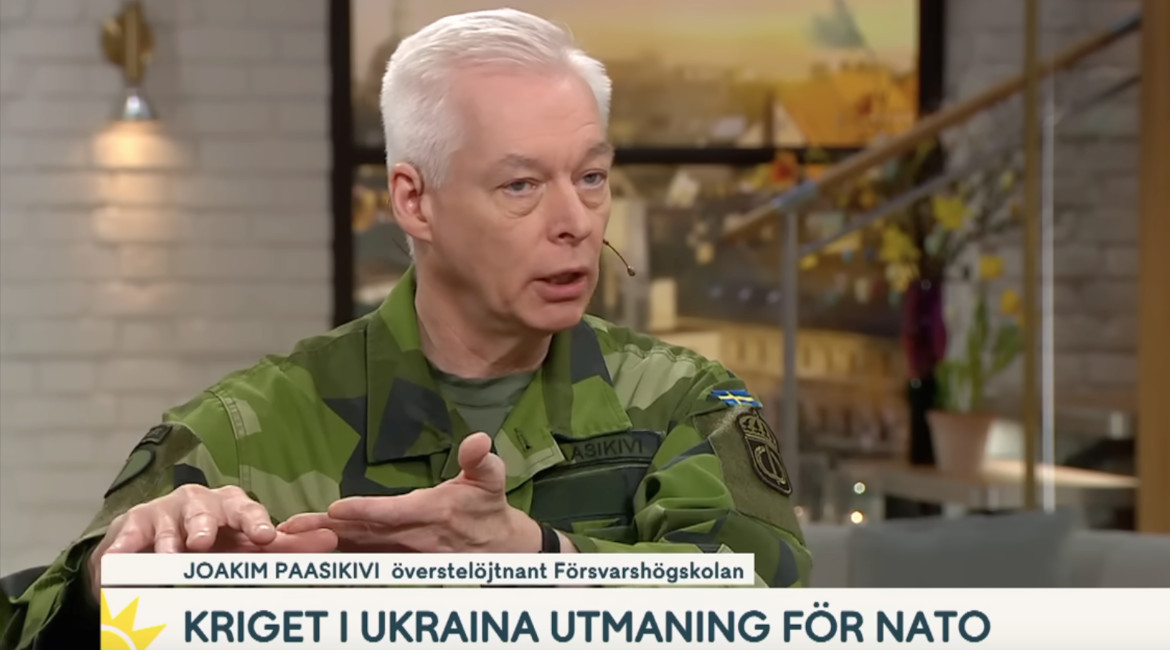
Swedish military wants to remilitarize the Åland Islands
The demilitarized autonomy has previously been known as 'the islands of peace.
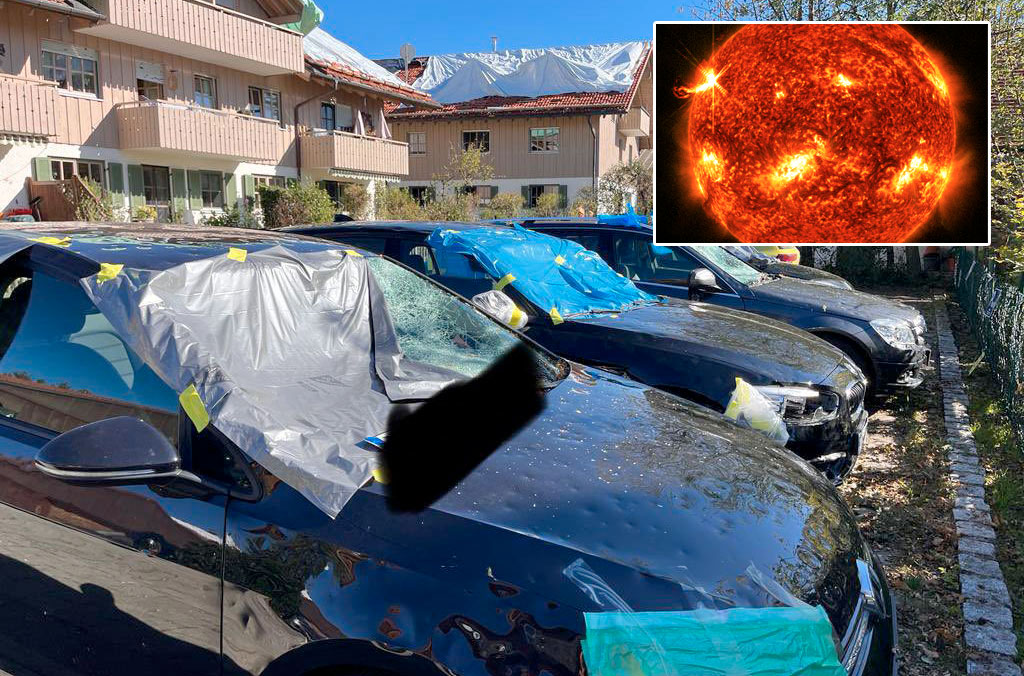
NOAA Predicts Zero Sunspots for Almost the Whole 2030s
CLIMATEThe United States' government scientific organization, the National Oceanic and Atmospheric Administration (NOAA), predicts zero sunspots from 2031 to 2040. This is an extreme situation that has not occurred in as long as humanity has been counting sunspots, and it leads us into uncharted territory in terms of our solar system. However, this prediction aligns with the warnings of the world-renowned solar researcher Valentina Zharkova for many years, who indicated in 2019 various signs of this catastrophic phenomenon, including the extreme hailstorms we have seen in Europe and the world this summer. The forecast and various observations this year give cause for very significant concern. In this unique analysis, Free West Media explains why.
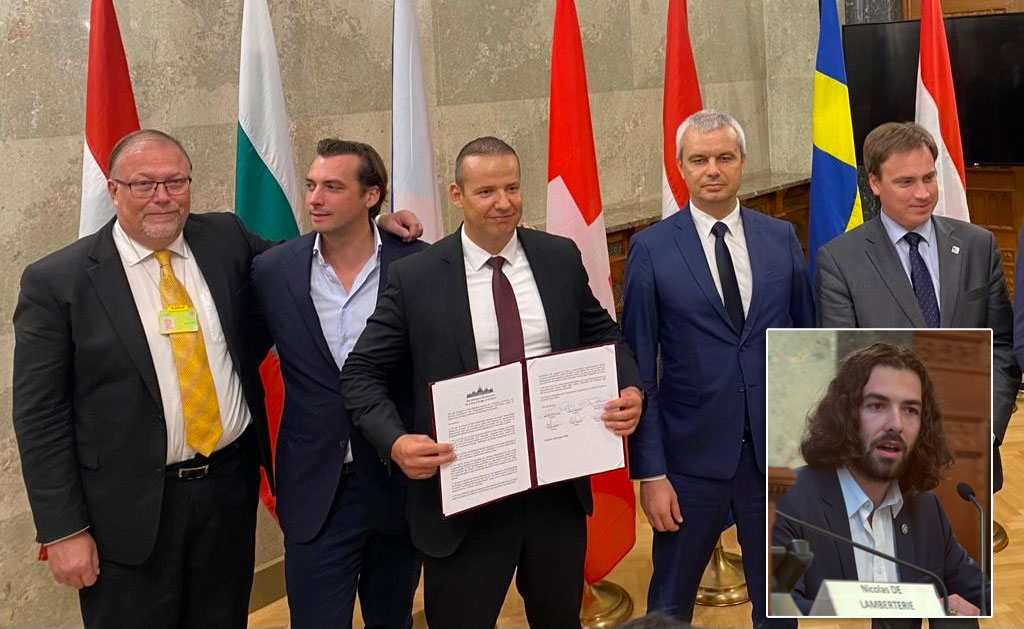
European Nationalist Parties Forge Cooperation Ahead of EU Elections
EUROPEAN ELECTIONSOn Saturday, August 26, representatives of six European nationalist parties gathered in Budapest. The meeting was initiated by the Hungarian party Mi Hazánk and took place in the national parliament. Representatives of the parties signed a joint declaration that not only reaffirms the parties' friendship but also their unity on a range of complex political issues. A surprisingly clear and radical manifesto was established. The hope is that this cooperation will lead to success in the EU elections and eventually result in the formation of a group in the European Parliament. For Swedish nationalism, this meeting marks a success as Sweden, for the first time, has a party represented in a leading nationalist cooperation in Europe. Free West Media was present at this historic event.
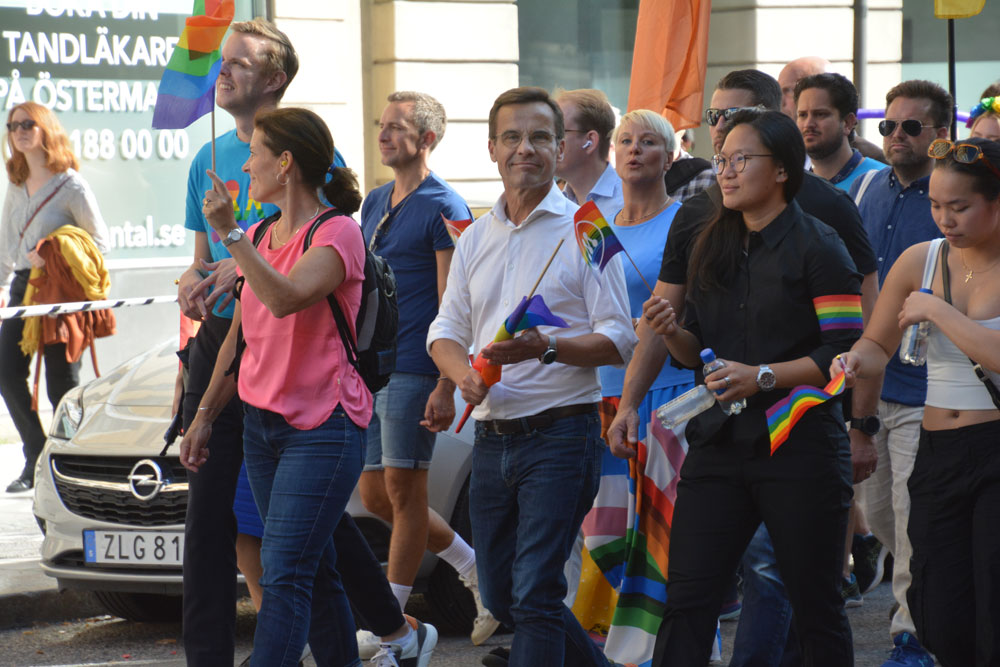
Turkey Believes Sweden Hasn’t Done Enough
Sweden will have to wait a bit longer for NATO membership, according to Turkey's Justice Minister Jilmaz Tunc. First, Sweden must extradite the "terrorists" Turkey wants and stop the desecration of the Quran.
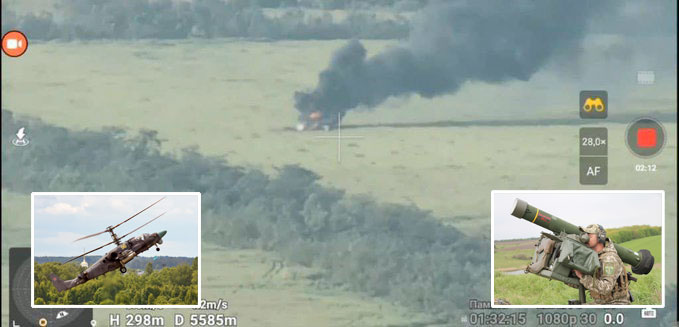
Swedish Weapon Takes Down Russia’s Best Attack Helicopter
The Russian attack helicopter Ka-52 is considered one of the world's best and has struck fear in Ukraine, where it has hunted down tanks and other armored vehicles, often beyond the range of many light anti-aircraft systems. However, it has met its match in the Swedish air defense missile system RBS 70, which has quickly led to significant losses for the Russian helicopter forces.

Strong Confidence in German AfD
Alternative for Germany (AfD) held a party conference on July 29-30 to select candidates for the upcoming EU election next year. EU Parliament member Maximilian Krah, belonging to the party's more radical, ethnonationalist faction, was appointed as the top candidate. The party's two spokespersons delivered powerful speeches criticizing the EU's failed migration policy and trade sanctions that isolate Europe and Germany from the rest of the world. They argued that it's time for the EU to return a significant portion of its power to national parliaments. However, they have dropped the demand for Germany to exit the EU.
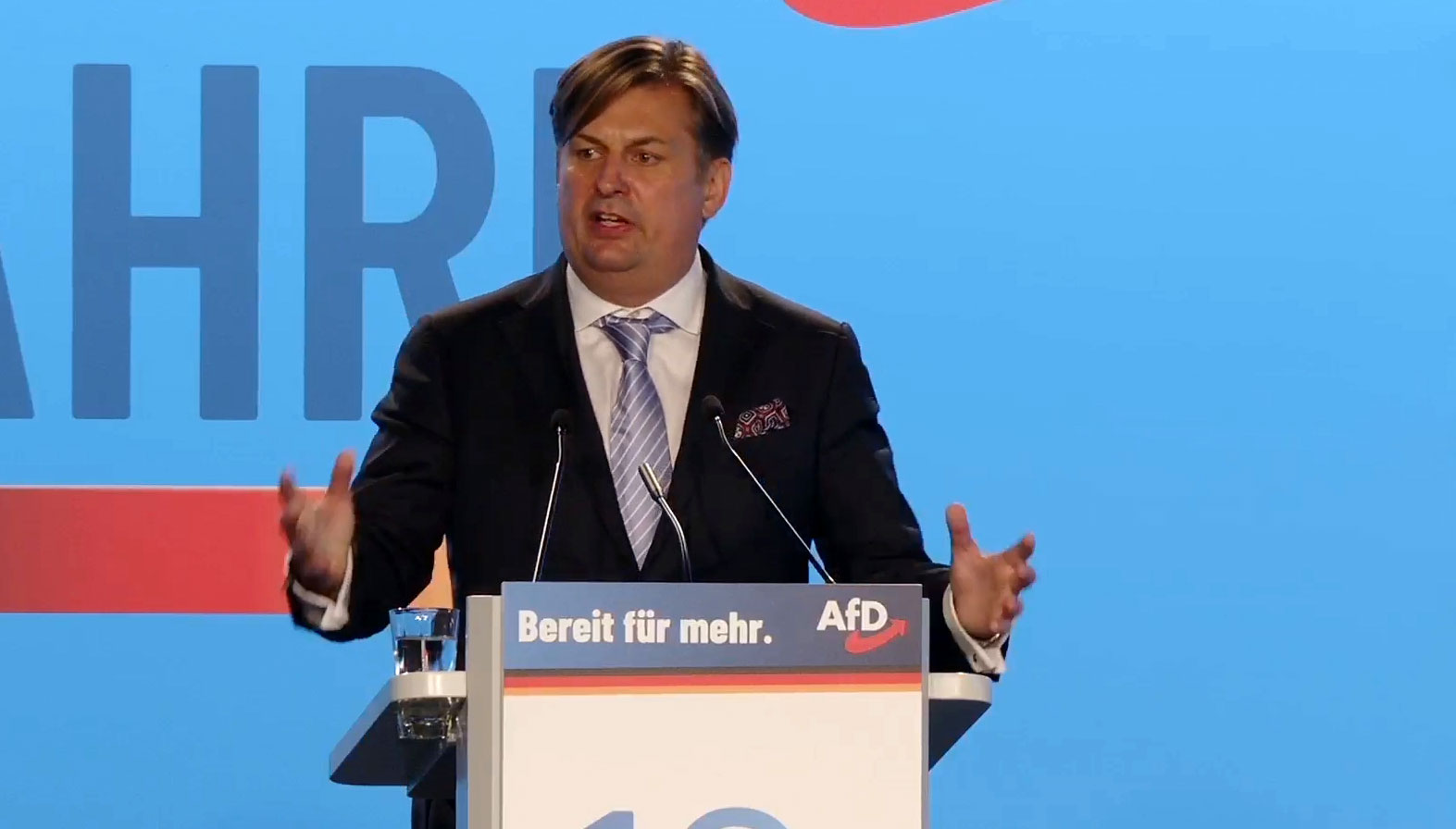
The Establishment Wants to Ban Germany’s Second Largest Party – for the Sake of Democracy
The rising popularity of AfD has raised strong concerns within the establishment. Despite lies and demonization in the media and isolation from the overall political establishment, the party continues to grow. Certain representatives of the party are accused of becoming increasingly "extreme," and in an unusual move, the influential weekly newspaper Der Spiegel demanded that AfD be "banned."

Dutch FvD break through the media blockade
What is happening in the Netherlands? It is often difficult to follow events in other countries, especially when distorted by system media. We give Forum for Democracy (FvD) the opportunity to speak out on the political situation in the Netherlands and the staunch resistance they face in trying to save the country.
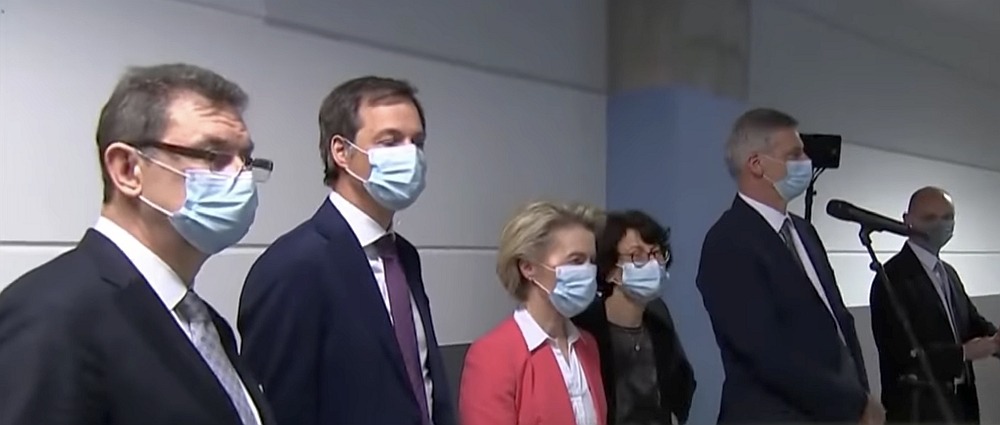
The Ursula von der Leyen Affair
After a criminal complaint in Belgium against the President of the European Commission, the so-called SMS-case, now takes a new turn. The judge responsible for the investigation will likely gain access to the secret messages exchanged between Ursula von der Leyen and Albert Bourla, CEO of Pfizer, at least if they haven't been deleted.

Publisher of Unique Literature Worldwide Blocked by International Distributor
Arktos has distinguished itself by publishing groundbreaking philosophers and social critics. Now, the publisher's international distributor has abruptly terminated the cooperation, and more than 400 already printed titles cannot reach their audience. There is strong evidence that the distributor has been under pressure, something that has also happened in Sweden. We have spoken with Arktos founder Daniel Friberg about the ongoing struggle for freedom of speech in a shrinking cultural corridor.
